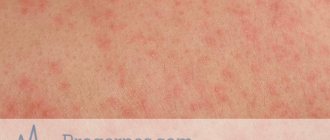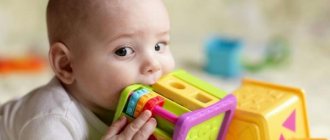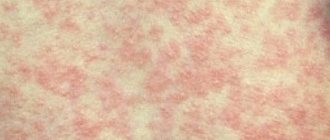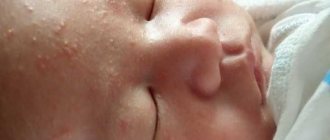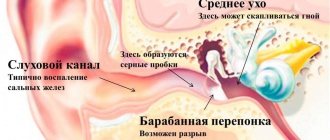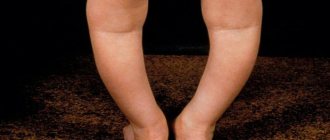Otitis media in children can be accompanied not only by pain, but also by fever, lethargy and runny nose. Very often, this disease can quickly develop into a more complex form, purulent, in which the treatment of otitis media in children will be difficult and lengthy.
When it affects the eardrum, which can lead to a chronic nature of the disease. Most minor ear injuries and various manipulations of the ear can be symptoms of otitis media in a child. In particular, this is a symptom of traumatic otitis media. Another popular cause of the disease is foci of infection that are located in the nose, tonsils or nasopharynx.
Causes and risks of otitis media
Otitis in children is the stagnation of fluid in the middle ear due to the formation of a blockage of the Eustachian tube. The reason for this situation is mainly the penetration of pathogenic bacteria from the pharynx into the middle ear.
Since in newborn babies and preschool children the Eustachian tube is located in a horizontal position between the nasopharynx and the middle ear, pathogens can easily penetrate from the pharynx into the middle ear. In older children, the location of the Eustachian tubes becomes more vertical, which makes the process of penetration of various microorganisms into the middle ear difficult.
Children who suffer from allergies or constantly breathe in tobacco smoke (parents smoke indoors with the baby) have a huge chance of encountering a disease such as otitis media. After all, increased secretion of mucus, irritated by external factors or inflammatory processes, can clog the Eustachian tubes.
Children's otitis is scary primarily because increased pressure occurs in the middle ear, which affects the eardrum. As a result, the membrane may not withstand the pressure and rupture, which will lead to partial or complete deafness.
How to Prevent Ear Infections in Children?
Use these measures to prevent ear infections in toddlers:
- Protect your baby from pathogens. Ear disease is often the result of an infection that begins in the nasal cavity or throat. These infections occur as a result of poor defense against pathogens. When you protect your baby from pathogens that cause illnesses like colds, sore throats, etc., you are also protecting him from ear infections. It all starts with good hygiene. For example, teach your child to wash their hands after playing, cover their mouth and nose if someone nearby sneezes, and always wash their hands if they pick their nose. Also, keep your baby's personal belongings clean to minimize the risk of exposure to a pathogen that can cause an ear infection.
- Drink from a cup, not a bottle: The Academy of Pediatrics says bottle drinking should be stopped in early childhood. Instead, you should encourage your baby to drink milk or formula from a sippy cup. In fact, pediatricians recommend introducing open cups as early as 12 months of age. Sleeping with milk or formula has been widely linked to ear infections in toddlers.
- Immunize your baby against pathogens that cause upper respiratory tract infections, as they can also lead to ear infections. For example, immunization against pneumonia and influenza has been shown to prevent ear infections in toddlers.
- Be careful about allergies : If you know your little one is allergic to something, then be proactive about preventing them from coming into contact with it. Ear disease can occur as a byproduct of a previous respiratory allergy.
- Preventing exposure to pollution and tobacco smoke: Studies have shown that young children exposed to secondhand smoke are more likely to have recurrent ear infections. Car pollution also has similar effects. Therefore, keep your baby away from places where he may inhale car waste or tobacco smoke.
- Breastfeed your baby: Pediatrics recommends breastfeeding even after the first birthday, while the World Health Organization (WHO) recommends breastfeeding throughout the preschool period, even beyond the age of two. Experts say breastfeeding is vital to protecting your baby from a range of pathogens, including those that can cause ear infections. The study found that children who were breastfed over the age of nine months were 53% less likely to develop ear infections before the age of six. This means that breastfeeding not only protects your baby now, but also provides significant long-term protection against ear infections.
Parents may have several questions about ear diseases in babies. We will answer these questions in the next section.
Symptoms of otitis media
Many mothers believe that otitis in a child develops due to the fact that “the ear is blown” during a walk or in a draft in the room. In fact, the infection cannot enter the baby’s ear from the outside, and the symptoms of otitis media often resemble the symptoms of a common cold.
- runny nose;
- temperature - up to 40 degrees;
- restlessness and crying of the baby;
- sleep disturbance;
- decreased appetite;
- breast refusal.
The first thing mothers should pay attention to is how the baby sucks on the breast or pacifier. When the baby is sucked to the breast or pacifier, pressure is created in the nasopharynx, which increases the pain in the baby’s ear several times. As a result, the baby cannot eat and cries a lot.
Causes
Before we talk about the treatment and symptoms of otitis in children, it is necessary to understand what may be the cause of the occurrence and subsequent development of otitis in children:
- Poor immune system;
- Family or genetic predisposition to the disease;
- Features of anatomy in the structure of the ear and nasal cavity;
- Nutritional or vitamin A deficiency.
Viruses
Only three types of bacteria and viruses can cause otitis media.
- These are streptococci, Haemophilus influenzae and a virus called moraxella;
- Viruses associated with otitis media: influenza, adenoviruses, rhinoviruses, and parainfluenza.
Allergies
Among the sources of allergy diseases are bronchial asthma and allergic rhinitis;
External environment
- According to studies, breastfeeding reduces the possible risk of otitis media by 13 percent, and the protective effect will continue for another two to three months after the child stops drinking breast milk;
- Pacifiers only increase the likelihood of a child getting otitis media. This may be because using a pacifier makes it easier for bacteria to enter the eustachian tube;
- Children who are passive smokers are also at risk;
- Frequent visits to kindergarten. During close contact of a child with other children, he may become ill due to infection with viruses that are resistant to antibiotics;
- Low standard of living in the family. Here all the previous reasons are combined into one.
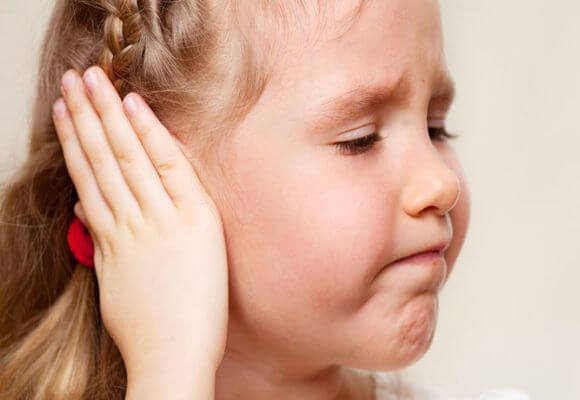
Mechanism
Often the disease develops due to previous illnesses, such as the flu or a runny nose. Because of them, children's immunity is greatly weakened, and the number of bacteria dangerous to health increases. Violation of any of the functions of the auditory tube can cause high pressure and accumulation of excess fluid. All this leads to inflammation. The eardrum will then begin to bulge, causing anxiety and pain.
As the inflammatory process intensifies in the child, pus begins to form in the ear, breaking through the eardrum and coming out of the ear. After the pus breaks out, the child's condition may improve greatly, and the pain will begin to subside. The temperature will drop, but at the same time, your hearing will become worse.
Complications may arise if pus gets into the temporal bone, but this is the exception rather than the rule.
Ear inflammation - a type
When a child’s ears hurt, parents look for a lot of reasons that can cause inflammation in their child. These include walking in windy weather, water getting into the ear while swimming, and much more. However, there are a number of reasons that mothers don’t even remember.
- Improper ear cleaning. If you clean your baby's ears using cotton swabs without restrictions and do not follow basic hygiene rules, this procedure will lead to inflammation of the outer ear. After all, when using incorrect hygiene products, infections enter the ear canal, the passage swells and narrows, and the skin around it turns red.
- Untreated runny nose. Quite often, the middle ear becomes inflamed after a child suffers from a common acute respiratory infection. This is a complication of this disease. To prevent this from happening, it is worth remembering that any runny nose must be treated. After all, small children who do not have strong immunity and who do not yet know how to blow their nose are at risk. The thing is that infected mucus, which is located in the nasopharynx, passes into the child’s middle ear through the auditory tube, and if it is not cleaned out and certain medications for the common cold are not used, then complications can almost certainly occur.
- Allergy. Children prone to allergies may also suffer from allergic otitis media, which almost always occurs without fever.
How are Ear Infections in Children Diagnosed?
The pediatrician uses the following procedures to determine whether an ear infection is present:
- Ask questions about your baby's medical history: The doctor will ask you about your baby's medical history to see if he has had a cold or throat infection recently. Colds and throat infections usually lead to ear infections.
- Ear examination with an otoscope: The doctor inserts a specialized camera called an otoscope into the ear canal to examine the eardrum. Redness or inflammation of the eardrum indicates an ear infection.
- Acoustic reflectometry: A pneumatic otoscope sends short bursts of air into the eardrum. A healthy eardrum flutters with air, but an infected middle ear remains stiff. This procedure is called acoustic reflectometry.
- Tympanometry: A tiny speaker with a sensor is placed in the ear canal and sound waves of different frequencies are emitted. The sensor measures the movement of the eardrum at various frequencies. The degree of movement of the eardrum can determine the severity of the ear infection. Tympanometry requires the patient to remain still and not speak. Therefore, it is better suited for older children who understand the instructions.
- Tympanocentesis: In very rare cases, a doctor may puncture the eardrum to collect infected fluid from the middle ear. This is called tympanocentesis, and the fluid is sent for laboratory analysis to determine the cause of the ear infection. This diagnosis may be a last resort when a doctor cannot determine the cause of an ear infection.
Depending on the cause of the ear infection, your doctor will suggest treatment options.
Treatment of otitis media
It will not be possible to cure otitis media in a child in a couple of days. This usually takes at least 10 days. It is not worth treating this disease on your own, since adequate therapy can only be prescribed by a specialist. But you have the power to alleviate the baby’s suffering by relieving pain and follow all the doctor’s recommendations.
- Clean your baby's nose. To do this, you can use special aspirators, flagella twisted from cotton wool, or a regular bulb (syringe).
- Keep your baby's ears warm. To do this, just put on a cap.
- Do not bathe your baby when he is sick.
- If your doctor has prescribed a course of antibiotics, do not miss a single dose. It is most effective to give injections to your baby - this way you will protect the baby’s stomach from chemicals.
- Use vasoconstrictor medications in the nose to maintain patency of the auditory tube.
- Acute otitis media can also be treated with dry heat procedures. But before doing this, be sure to consult your doctor. For these procedures, you can use vodka compresses, heating with a blue lamp, etc.
- Acute purulent otitis media is treated with antibiotics. It is also necessary to treat the ears with a disinfectant solution and first clean them of pus. This can be done using cotton wool.
Acute purulent otitis media in a child is usually treated for at least two weeks, and acute catarrhal otitis media can be cured in 5-7 days. But in some cases, doctors insist on surgical treatment.
Operations on the middle ear can be different:
- tympanoplasty – prosthetics of the eardrum and chain of auditory ossicles;
- meringoplasty – restoration of the eardrum;
- sanitizing operations;
- plastic surgery of the middle ear structure;
- shunting of the tympanic cavity, etc.
Treatment
If there is even the slightest suspicion of otitis, the first thing you should do is call a doctor at home. There is no need to think about how to treat otitis media in children, as this can only worsen the situation. This should be either an ENT specialist or a pediatrician.
It is also important to consult with him and get advice at the clinic. If you start treatment on time, you can quickly relieve your child of pain and suffering without consequences.
For example, timely treatment of otitis media is based on conservative techniques. This therapy includes antibiotics, which are taken either as tablets or as injections. Such treatment should last no more than 7 days if the child is under two years old.
All these actions are aimed at preventing complications and their development. Among other things, it is necessary to take vasoconstrictor drugs in order for the treatment of otitis in children to go faster.
Local treatment
- Thermal procedures. Heat helps to activate lymph and blood circulation at the site of inflammation.
- Heat treatments also produce protective cells. Ear drops, vodka compresses or heating with a blue lamp will help;
- If it is purulent otitis, it is necessary to periodically remove the pus. Cotton pads are best suited for this. In addition, it is important to disinfect the ear with solutions such as chlorhexidine or miramistin; Physiotherapy. These include, first of all, ultraviolet irradiation, UHF, as well as treatment with mud and laser radiation;
It is important to remember that the choice of medication and treatment method will depend only on the stage and degree of the inflammatory process. Any medications, and especially antibiotics, should be prescribed taking into account the child’s personal intolerance or sensitivity to them and microbes.
If the effect of treatment with certain drugs is not observed, it is recommended to change the drug to another.
Treatment with compresses
If, for catarrhal otitis, the pediatrician prescribed an alcohol compress to the child (this is possible if there is no flow of pus from the ear), then the procedure must be carried out as follows. You need to take a gauze napkin with four layers.
The dimensions of this napkin should be 2 centimeters larger than the auricle. You need to make a small slit in the middle of this napkin. After this, the napkin is moistened with alcohol. Next, you need to squeeze it out properly and apply it to your ear. At the same time, the auricle must pass through the slot and remain on the surface.
Waxed compression paper is placed on top, the dimensions of which should be larger than the dimensions of the gauze. After this, everything is covered with cotton wool. And the cotton wool should be larger in size than paper.
The resulting compress must be secured with a bandage or scarf. You can hold it for up to 3-4 hours, because after that the compress will begin to lose its thermal properties.
Ear drops
You should not put drops directly into the ear, since it is impossible to properly examine the ear at home. This should be done by an ENT specialist. It is he who will clarify the inflammatory nature, tell you how to treat otitis media in a child, and determine the presence or absence of damage to the eardrum.
If the eardrum is ruptured or cracked, any amount of eardrops deposited there will cause damage to the auditory nerve. This will lead not only to damage to the functioning auditory ossicles, but also to hearing loss.
Therefore, it is best to insert a cotton swab into the ear canal, and then start dripping ear drops directly onto the cotton wool. This must be done three times a day. The drops must be preheated to the optimal temperature (36.6 degrees).
Children's ear drops, which have analgesic and anti-inflammatory effects, are useful to keep in your medicine cabinet at home. These include drops such as OTINUM or OTIPAX. They treat some similar diseases.
Self-treatment
You can only suspect this disease on your own, but only a pediatric doctor can examine the child and give him an accurate diagnosis. He must prescribe appropriate treatment.
Today, therapy to help get rid of otitis media includes both anti-inflammatory and antibacterial agents. Other techniques include physical therapy, nasal irrigation and compresses. General treatment is also possible.
Without appropriate medical education, you cannot prescribe treatment or try to cure the baby yourself.
Using ear drops
To date, there are no ear drops that can be used for babies under one year old. Despite the fact that many parents have already used a product such as Otipax, the instructions of which clearly state the possibility of its use from the first days of the baby’s life, this drug has a number of side effects. Surely you will say that doctors are playing it safe, so they forbid it to be given to newborn children, but if you look closely at the list of substances included in the drops, you will see that some components cause side effects such as diarrhea, vomiting and even convulsions. And no specialist can say how exactly your baby will react to this remedy. Therefore, it is not worth risking the health and life of the baby.
It is also important to know that ear drops should be used in a child in a special way, regardless of the child’s age. For example, it is simply dangerous to instill drops directly into the ear, because they can reach the cavity of the middle ear and injure the auditory nerve. Therefore, it is best, if the doctor still prescribed ear drops, to instill them into the ear through a cotton swab. It is also worth remembering that this medicine cannot be dripped hot or cold. The best option is to simply warm the drug in your palms.
Our grandmothers used to treat us with boric alcohol. However, there is now confirmed information that this remedy, when instilled into the ear, causes irritation of the skin of the ear canal and even convulsions.
How to determine otitis media?
Otitis in children under one year of age always occurs in a latent form, so if the child is still too small, it is difficult or impossible to determine and identify the diagnosis.
But you should pay attention to the fact that when a child is ill, he may often turn his head, not eat, and turn away from the breast. This is one of the signs that you need to examine and begin treatment for ear inflammation in a child.
If your baby tugs and rubs his ear frequently, this can also be a sign of severe pain. It can also be a simple habit.
To determine the pain, you need to lightly press on the cartilaginous protrusion of the ear (tragus). If the baby does not experience pain in the ear, then he will not react to this pressure either. This is an important point in how to recognize otitis media.
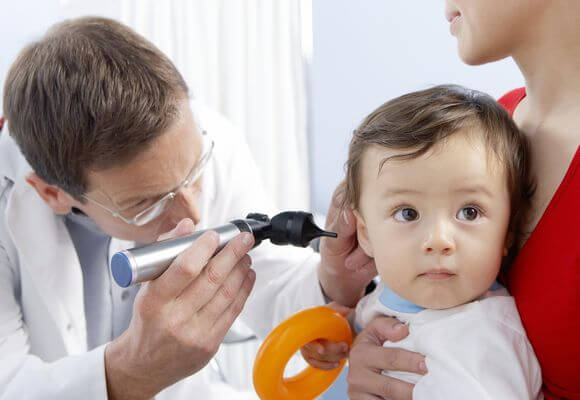
Preventive actions
No matter how trivial it may sound, the best prevention of otitis media in children is breastfeeding. It is through mother’s milk that the baby receives the necessary “building blocks” of his immunity, which will be able to withstand a cold with dignity and prevent the occurrence of various complications. If the baby is bottle-fed, then the formula should be selected as carefully as possible, and saving in this case is out of the question.
In addition, parents should know that simple cotton wool and sea water can be used as a preventive measure for otitis during colds. Just don’t forget to clear mucus from your baby’s nose, and don’t let the cold run its course.
Ear diseases in children
Otorhinolaryngology Tags:
Gunay Ramazanova:
I am Dr. Ramazanova, an ENT doctor at the MedikCity clinic. Today we have a very interesting program, a very interesting guest, I will ask Anton Mikhailovich about tympanometry, about hearing in children, about the auditory organ, about the ear there will be the first program. I recommend everyone to stock up on a pen and a notepad, because we will be giving types of tympanometry, there will be numbers, I highly recommend writing everything down, because you are unlikely to hear it anywhere else.
My guest is a very good otorhinolaryngologist, pediatric audiologist, who deals with hearing in children and diseases of the ENT organs in children, Anton Mikhailovich Samosvat. As I already said, today we will talk about hearing, more about children's hearing, children's ears and ear problems in children. Of course, this is all connected in otorhinolaryngology, organs are connected to each other, we will also talk about this.
The first question is about communication. Let's tell listeners about the auditory organ, how it is connected with our other organs, not only with the ENT organs.
Anton Samosvat:
Let's start with the structure of the ear in children. It should be noted some differences in the anatomy of the sound-receiving apparatus, sound-conducting apparatus and structure. There is a difference in the structure of the auditory tube; in a child, unlike in an adult, it is wider and shorter. This creates a shorter path for infection to enter the middle ear.
Gunay Ramazanova:
Probably, first we’ll tell you that there are external, middle and internal ears. The middle ear is connected to the nose, we’ll talk about that, and then we’ll talk about the pipe, if possible - about the anatomy. There will be a separate program about the outer ear, and there will also be programs about the inner ear.
Today we will talk about the middle ear. A very interesting topic regarding children with adenoids, so let's talk about the middle ear.
Anton Samosvat:
The middle ear is the space that lies behind the eardrum. This is the tympanic cavity, the chain of auditory ossicles. The middle ear is connected to the nasal cavity by the auditory tube. This is the main cavity, which consists of muscle fibers and mucous membranes that produce a certain secretion. The structure of the auditory tube contains many glands. The mucous membrane of the auditory tube is very closely connected with the nasal cavity. The epithelium of the auditory tube of the mucous membrane practically repeats that of the nasal cavity, as a continuation of the nasal mucosa. Therefore, very often complications of nasal diseases, in children in particular, are ear diseases: a banal runny nose can develop into otitis media.
Gunay Ramazanova:
By the way, patients often ask: if my ear is blocked, what do you do with my nose? We enter the middle ear through the nasopharynx, because the membrane is intact. I usually tell patients that the middle ear should normally only contain air and produce a little mucus, just like the nose. The same mucus flows into the nasopharynx through the auditory tube. It's like an outlet pipe, like a sewer. There are problems, for example, the mouths of the auditory tubes go into the nasopharynx. When the mouths of the auditory tubes are closed, in what cases?
Anton Samosvat:
Most often this is a pathology of the nasopharynx. In childhood, the predominant pathology is hyperplasia of adenoid tissue, or adenoid hypertrophy. This is an increase in lymphoid tissue in volume. Adenoids are located in the dome of the nasopharynx. Under certain conditions, there is a tendency to increase, hypertrophy. There, in the nasopharynx, the mouths of the auditory tubes are normally located. Under certain factors, during inflammation, during hypertrophy, adenoid tissue overlaps and blocks the excretory ducts and the mouths of the auditory tubes. That is, there is no ventilation of the auditory tube, there is no outflow, the glands begin to work differently and a pathological process occurs either in the auditory tube, or, as a continuation, in the tympanic cavity, in the middle ear.
Gunay Ramazanova:
Then this is inflammation of the auditory tube, called eustachitis, or inflammation of the auditory tube. The pipe becomes clogged, mucus collects inside the ear, because there is no other way out. What are the clinical phenomena in such cases?
Anton Samosvat:
The main manifestations of inflammation are pain, primarily discomfort in the ear. The child may either complain of pain or say that he is experiencing discomfort. It all depends on the age-related characteristics of perception, even on the characteristics of the child’s imagination, since there are extraneous sounds and clicking. But the main symptom is hearing loss.
Gunay Ramazanova:
Does the child understand this and complain?
Anton Samosvat:
As a rule, it depends on age characteristics. If pain predominates, of course they complain.
Gunay Ramazanova:
That is, they talk about pain, but hardly about hearing loss.
Anton Samosvat:
Not always, yes.
Gunay Ramazanova:
In what cases is this true, with otitis media or eustachitis?
Anton Samosvat:
Eustachitis is an inflammation of the auditory tube. As a rule, it occurs as a result of complications of rhinitis - a common runny nose, rhinosinusitis - this is an inflammation of the paranasal sinuses, and is most often accompanied by pain and congestion in the ears.
Gunay Ramazanova:
How can these pathologies be diagnosed?
Anton Samosvat:
During the initial examination, an examination of the middle ear is performed. It is advisable that the examination be carried out using special equipment, this is an otoscope, a microscope if possible, and endoscopic technology is also used - an optical system that allows you to evaluate the eardrum, internal and external auditory canals and visualize the space that is located behind the eardrum, that is, directly the tympanic cavity itself.
Gunay Ramazanova:
What will we see from the side of the nose?
Anton Samosvat:
From the side of the nose, we also perform an examination using anterior rhinoscopy, using special optical systems, in particular, an endoscope. We use additional diagnostic methods, such as an endoscope and sometimes, extremely rarely, x-rays.
Gunay Ramazanova:
I know that you, Anton Mikhailovich, work very well and skillfully with young children. You even performed endoscopy of the nose and nasopharynx on one-year-old children. This is a very unpleasant procedure. You do it very well and record it, so I want you to talk more about endoscopy of the nose and nasopharynx, and about adenoids. What do we see then, how do we see the mouths of the auditory tubes? What kind of endoscopes are there, what is the best way to do endoscopy for children, is it possible to relieve pain? Tell us about the technical aspects, please, so that parents also know, because many parents do not even know that there is such a method when the doctor sees everything. Please tell us how this happens technically, what we see, what both doctors and parents should pay attention to?
Anton Samosvat:
Indeed, sometimes a conventional examination using an illuminator is not enough, so it is necessary to use various optical systems to examine the nasal cavity and nasopharynx. Optical systems are endoscopes. They come in different types, there are rigid, that is, hard, there are fiber - soft endoscopes, they differ in thickness, diameter and viewing angle. Using an endoscope, we can assess in more detail the functional state of the nasal mucosa, look at the main anatomical structures of the nose - the nasal septum, nasal turbinates, and also assess the condition of the nasopharynx - an area that is not accessible during a routine examination. When examining the nasopharynx, the mucous membrane, adenoids, the degree of their hypertrophy, as well as the structures that connect the nasopharynx with the cavity of the middle ear, that is, the mouth of the auditory tubes, are assessed. Most often, such an examination is performed during endoscopy.
Gunay Ramazanova:
What do we see during endoscopy? Parents sometimes see it on the screen or in a recording. What should they pay attention to: color, highlighting, size? How to tell parents about the size of the nasopharynx? What are I, II, III degrees? Some people talk about IV degree, but there is no such degree.
Anton Samosvat:
There are several classifications. Previously there were 4 degrees, there were more radiological aspects. Modern classification involves 3 degrees of adenoid hypertrophy and is based on the size of the nasopharynx. If the lymphoid tissue overlaps 1/3 from above the dome of the nasopharynx, this is clearly visible on the monitor; we show it to parents when subsequently viewing endoscopic photographs; 2/3 is the II degree of hypertrophy, and if the lymphoid tissue completely blocks the lumen of the nasopharynx, it is interpreted as the maximum III degree. III degree - practically no nasal breathing.
With inflammation of the mucous membrane of the nasal cavity and lymphoid tissue, mucus often enters the auditory tubes and reflux. It can only be seen during endoscopic examination.
Gunay Ramazanova:
What do we see on the adenoids, what color, what tissue structure? Why is endoscopy important? Everyone takes x-rays, they think that it is enough, but we see so much in 10 seconds - color, discharge, shape, structure of the adenoids.
Anton Samosvat:
Yes, radiography is not as revealing as endoscopic diagnosis. When examined using optical systems, we can assess not only the degree, but also the condition of the mucous membrane of the nasal cavity and lymphoid tissue: are there inflammatory changes, is there a pathological secretion, purulent discharge. They are not visible on x-rays. The most important thing that often happens when pathology is associated with the middle ear is the reflux of contents into the auditory tube, the so-called reflux. It is visible only during endoscopic examination.
Gunay Ramazanova:
How do we see this?
Anton Samosvat:
Accumulation of mucus at the mouth of the auditory tube. There are functional tests, for example, a child swallows. During endoscopy, we see how the contents of the nasopharynx and mucus are drawn into the auditory tube.
Gunay Ramazanova:
Yes, this is very important if the mouths of the auditory tubes are visible and visualized. They may not be visible.
Anton Samosvat:
Yes, there is a certain pathology that is associated with the block of the auditory tubes both by lymphoid tissue, directly by hypertrophied adenoids, and by the structures of the nasopharynx, the so-called tubal ridges. This is also lymphoid tissue, which is located on the lateral wall of the pharynx on both sides. In a chronic inflammatory process, with certain allergic diseases, the tubal ridges can become hypertrophied and can also close the pharyngeal openings of the auditory tubes.
Gunay Ramazanova:
It’s not for nothing that we are talking about the nasopharynx in such detail today, because the causes of otitis media in children are mainly located in the nasopharynx. Therefore, we need to talk about them more. We talk about adenoids, but it happens that the adenoids are small, and tubal ridges close the tubes, and the child is diagnosed with diseases such as otitis media.
We understood what was happening with the mouth of the auditory tubes and the nasopharynx. Tell us about otitis media. In general, what are otitis media and how to diagnose them in children, what are the complaints?
Anton Samosvat:
Today the topic of the program is “Diseases of the middle ear”, so we will not touch on external otitis media. There is external otitis media, we will talk about this in another program. Catarrhal otitis media (the main pathology of childhood), exudative otitis media (fluid accumulation in the tympanic cavity) are the main 2 types of otitis media. There is also purulent otitis media as the next stage.
Gunay Ramazanova:
Can you tell us about catarrhal otitis media? What is catarrhal?
Anton Samosvat:
Catarrhal otitis media is an inflammation of the structure of the middle ear, the tympanic cavity, which is accompanied by severe pain, temperature reaction, and general intoxication. There may also be signs from the nasal cavity - runny nose, nasal congestion, rhinorrhea.
Gunay Ramazanova:
That is, the child fell ill with ARVI, then his ears began to hurt. The child's ears hurt; nothing is leaking, there is pain, there may be no temperature. What's going on inside the middle ear?
Anton Samosvat:
There is not always a temperature reaction. With catarrhal otitis, as a rule, we see hyperemia, that is, a bright red eardrum. Sometimes there may be a bulging of the eardrum, injection of blood vessels, that is, the vascular pattern is clearly pronounced, the color reflex is smooth.
Gunay Ramazanova:
It's on the eardrum, and then we don't see anything. The eardrum is intact and red, and there are also problems with the nose.
Anton Samosvat:
As a rule, there is swelling and an inflammatory reaction in the nose.
Gunay Ramazanova:
How to treat?
Anton Samosvat:
Depends on the etiology of the disease. Most otitis media are viral and treatment is mostly symptomatic. These are local topical painkillers, systemic drugs, both painkillers and anti-inflammatory, and in case of otitis media, we always prescribe local topical drugs into the nasal cavity in order to relieve swelling from the auditory tube. Under certain conditions, if the nasal cavity is without swelling, if the nose breathes normally, then ear ventilation should be restored naturally.
Gunay Ramazanova:
Do we usually not prescribe antibiotics for children?
Anton Samosvat:
No, antibiotics are never prescribed in the initial treatment of otitis media.
Gunay Ramazanova:
The second variant of otitis is exudative otitis media. Tell us about him.
Anton Samosvat:
Exudative otitis media is the accumulation of fluid in the middle ear cavity without damage to the eardrum, which is accompanied by hearing loss, discomfort in the ears, and congestion. It is extremely rare to be asymptomatic. Upon examination, we see liquid or a level of liquid behind the membrane; sometimes there may be air bubbles. The membrane itself is not red. Its color is either physiological or slightly bluish, cyanotic. As a rule, it is retracted, and the contour markings are unclear. Sometimes the liquid can be thick, dark yellow, close to brown, the so-called exudate.
Gunay Ramazanova:
Exudate is discharge, fluid, tissue fluid that comes out of the tissue and remains in the ear.
Anton Samosvat:
Exudate is a product of glands that are located in the auditory tube. Under certain conditions, say, a persistent block of the auditory tube, the normal functioning of the glands changes. The physico-chemical composition of the mucus produced changes, it becomes thicker, like a gel. Since the outflow in the nasopharynx is impaired due to the blockage, there is no escape route; fluid gradually accumulates inside the ear in the tympanic cavity - where the auditory ossicles are located.
Gunay Ramazanova:
Therefore, hearing decreases, and children do not complain about hearing loss.
Anton Samosvat:
Hearing decreases gradually, not sharply. The child either adapts or, due to his age, cannot understand or explain.
Gunay Ramazanova:
I am also interested in the question - type C, when the pressure changes. We'll tell you about this in a few words. Then we will talk about all types of tympanometry and talk about the differences between them. Under what conditions does type C appear?
Anton Samosvat:
The tympanometry method is based on diagnosing the mobility of the eardrum and measuring the pressure in the middle ear. When carrying out tympanometry, a graph is built that shows the dependence of the pressure in the tympanic cavity on the external environment. There are 3 main types of tympanograms. Type A is a high-peak tympanogram. A high peak, shaped like a triangle, around zero or slightly lower. As a rule, the pressure in the middle ear is normal or slightly positive.
Gunay Ramazanova:
Dear parents! We are talking to you, write it down. Type A - 2 peaks, in the form of a slide, a peak near zero. Keep this in mind because it is important. The peak is in the middle, give or take, but up to 25.
There is also a gradient, tell me. Different devices give different readings.
Anton Samosvat:
Yes, the indicators, as a rule, are the difference in pressure in the tympanic cavity. If, say, minus 200–300, then this is sharply negative pressure in the middle ear. This is either persistent, severe dysfunction of the auditory tube, or these are the initial signs of an exudative process.
Gunay Ramazanova:
So, remember: type A is a peak around 0, and there are numbers below, maybe don’t pay attention to them. Most importantly, you look at the chart. This is the norm, the normal condition of the middle ear. This is an objective research method. We can do it for children from a young age, from 2 years old, even earlier, and immediately diagnose that the child does not have major problems, similar to those we talked about earlier, inside the ear. No doctor can see anything behind the membrane. If the membrane is intact, we can only see what is happening behind the membrane in the middle ear on a tympanogram. There is also a 2nd type, type C.
Anton Samosvat:
Type C is a tympanogram that shows dysfunction of the auditory tube. With type C, the pressure will be more negative, the graph will shift to the left, as a rule, towards negative pressure. That is, if we see that the high peak is shifted to the left of the center, then this indicates dysfunction.
Gunay Ramazanova:
I repeat once again: type C has the same peak, but on the minus side. Not near zero, but on the minus side. This is a very important sign in children with adenoids.
Anton Samosvat:
Yes, hypertrophy of the adenoids, as a rule, is accompanied by a block of the auditory tubes, and we see such manifestations on the tympanogram.
Gunay Ramazanova:
That is, we see a change in pressure inside the middle ear. This is one of the important tympanograms. There is also type B. In the graph of type B there are no peaks, there is a straight line. The doctor will tell you about this. We have already talked about type B; with exudative otitis media there will be a straight line. This is very important because during examination, we doctors may not see the exudate behind the membrane.
Anton Samosvat:
As a rule, yes, but not always during a routine examination. If you don’t have equipment, an otoscope or a microscope at hand, then it’s not always possible for a child, especially a preschool child, to visualize the exudate in the tympanic cavity.
Gunay Ramazanova:
Many of my patients, even after surgery to remove adenoids, still have problems with their ears, constantly otitis media, but they do not do tympanometry, even in Moscow. Please tell us in what cases is it necessary to do tympanometry for children?
Anton Samosvat:
Definitely, such an examination should be carried out in case of complaints of hearing loss. For example, parents noticed that the child asks again, there are complaints from the child, he says that there are extraneous sounds in the ear, clicking.
Gunay Ramazanova:
Another important thing: children speak loudly, turn on the TV loudly. Maybe the parents don't understand, but when I ask, it turns out that yes, they listen loudly.
Anton Samosvat:
Yes, an indirect sign of the onset of hearing loss.
Gunay Ramazanova:
The child begins to hear poorly and this needs to be addressed. When and under what conditions should parents do tympanometry? With a normal ARVI, should they ask for tympanometry?
Anton Samosvat:
Of course not.
Gunay Ramazanova:
Is it necessary for adenoids?
Anton Samosvat:
If your child has been diagnosed with adenoids, regardless of the degree of adenoid hypertrophy, such patients should be evaluated audiologically using tympanometry to identify problems in the middle ear. Even a minimal degree of adenoids can affect the auditory tube, the middle ear and further hearing.
Even a minimal degree of adenoids can affect the auditory tube, the middle ear and further hearing.
Gunay Ramazanova:
In practice, there are cases where the adenoids are small, but the tubal ridges close the mouths of the auditory tubes. There are no complaints as such, but you do endoscopy and tympanometry in parallel, and you see that there is a problem.
In what cases is tympanometry still necessary? Do I need to do it before surgery?
Anton Samosvat:
After suffering from catarrhal otitis media, several weeks after recovery, we invite patients for a second appointment to assess the condition of the middle ear and evaluate the function of the auditory tube. It is even more indicated for children with recurrent otitis; if there are several episodes of otitis media per year, such a child needs dynamic audiological monitoring
Gunay Ramazanova:
Can tympanometry be done every month?
Anton Samosvat:
Depends on clinical manifestations. After suffering from otitis, there should be an examination at least once. If the norm is normal, then after a while we invite you for control, but not every month.
Gunay Ramazanova:
Remember, dear parents, when to do tympanometry, we will repeat it again. If a child has an earache, you did without antibiotics, it’s a common ARVI, but the ear hurts - a few weeks after recovery, do tympanometry. This is a painless, harmless procedure that can be performed even on small children.
What does tympanometry look like, tell us how it is done?
Anton Samosvat:
This is a hardware test that does not require special training for the child. It takes several minutes, from 1 minute to 5 minutes. A sensor is inserted into the ear canal; it is usually soft, like an earphone, does not cause discomfort, and there is absolutely no pain. Pressure is applied to the ear canal through a sensor, the device analyzes and gives us a graph. We interpret the chart and make a conclusion, a diagnosis.
Gunay Ramazanova:
That is, there is no need to be afraid of the method. I made it myself for small children. They, of course, scream first, and then we tell them: “Come on, let’s count the airplanes,” since similar sounds are made, and children tolerate it well. Some 5 minutes, and we have an objective condition of the child’s middle ear. This is a very important method.
We heard that after catarrhal otitis it is necessary to do this. 2nd case - if a child has frequent otitis media, a mandatory condition is to do dynamic observation, do tympanometry as often as the doctor says. 3rd option - when the child has adenoids, frequent adenoiditis, frequent ARVI, and so on, if the child has a block on the side of the nose. Then there may be changes in tympanometry, then you need to ask a doctor, no matter where you live, there are tympanometers everywhere - search and find. This method must be applied to children. This is prevention; we can avoid exposing the child to thick exudates.
What will tympanometry done on time give us?
Anton Samosvat:
If, during tympanometry and testing, we identify dysfunction of the auditory tube, we can begin conservative therapy in time, without leading to exudative otitis media and, accordingly, treat the nasopharynx, treat adenoid hypertrophy, an inflammatory disease of the nose. In this case, ear treatment as such is not required. As soon as the inflammatory process of the nasal cavity and nasopharynx is stopped, the auditory tube is unloaded, and the ventilation function of the auditory tube is restored. We do control tympanometry in a healthy state after treatment and obtain a normal type A tympanogram.
Gunay Ramazanova:
I want to tell you one clinical case. A child came from a large clinic in Moscow, operated on a year ago. Moreover, they operated on him twice, 2 times he had his adenoids removed. To my surprise, we were the only ones who did tympanometry for the first time at the clinic. We started to deal with this a lot. I don’t know who is responsible for this, most likely a primary care doctor. Therefore, we tell parents: if a child has one of the 3 problems that we talked about above, problems with otitis media and adenoids, be sure to ask for tympanometry yourself or sign up yourself. Suddenly the doctor forgot, anything can happen. Some doctors don’t know, can’t, don’t know how to interpret a tympanogram; they even have a device, but there are doctors who can’t and don’t do it. Now you can call any clinic and make an appointment for tympanometry. It's painless and very informative. There are pediatric audiologists, like Anton Mikhailovich, who can contact you and do a full examination of the child. I believe that young children who constantly walk with adenoids, frequent acute respiratory viral infections, even without ear complaints, should definitely undergo an endoscopic examination, because we see with our eyes the condition of the adenoids, the condition of the mouths of the auditory tubes, even the ridges. There are operated children whose adenoids were removed, but their ear problems did not go away because no one took care of the eustachian tube. I have many examples. The child is 2 years old, they found adenoids, they removed them, and now they have type B, exudate inside the ear continues to accumulate, and they go to the doctor endlessly. What to do? They are preparing for surgery again, this time to bypass the eardrums of the tympanic cavity.
Please tell us under what conditions, how can a doctor make a mistake with adenoids and miss exudative otitis media, for example?
Anton Samosvat:
Now adenotomy is not used as widely as before. There are certain indications for adenotomy. Preparation for surgical treatment should be carried out jointly, not only by an otolaryngologist, but also by related specialists, in particular, a pediatrician and sometimes an allergist. This aspect is very important, since allergic pathology is one of the leading factors in the manifestation of ENT diseases in children: allergic rhinitis, allergic adenoiditis, allergic rhinosinusopathy.
Gunay Ramazanova:
What happens to the adenoids, auditory tubes, and ears during allergies?
Anton Samosvat:
During an exacerbation, hyperproduction of mucus usually occurs. If there is seasonal hay fever, then, as a rule, there is hyperproduction of mucus, swelling of the nasal mucosa, swelling and enlargement of the adenoid tissue. Also swelling of the mucous membrane of the auditory tube, since it is a continuation of the mucous membrane of the nasal cavity and, as a rule, is involved in the allergic component of inflammation. Often such children are unreasonably referred for adenotomy without specifying the diagnosis or receiving concomitant treatment from an allergist. Even in big cities.
Gunay Ramazanova:
I also believe that all adenotomies should be done under endoscopic control in order to open the tubes, look at the condition of the auditory tubes, in order to treat the ears at the same time. There is also bypass surgery of the tympanic cavity, we can do it at the same time or not - this is also a discussed issue.
I still have a question about exudative otitis: what treatment is used, what methods?
Anton Samosvat:
As a rule, drug therapy, drugs of various groups - mucolytics, anti-inflammatory therapy, antiallergic drugs, sometimes local topical drugs both in the nose and in the ear. The first method is medicinal, that is, treatment with drugs and medications. Physiotherapy is also widely used; blowing of the auditory tubes by an ENT doctor is usually done in an ENT office. Sometimes pneumomassage of the eardrums is performed: using a special device, a vibroacoustic effect is applied to the eardrum and thus mobility is restored.
Gunay Ramazanova:
That is, it is not always an operation right away, you need to help the child first.
Anton Samosvat:
Not always. Very often it is enough to sanitize the nasopharynx, remove inflammation and exudative otitis is resolved.
Gunay Ramazanova:
They do a purge from an ENT doctor and help in the physiotherapy room. What methods? Electrophoresis?
Anton Samosvat:
The most common method is exposure using electrophoresis, also laser therapy, magnetic therapy.
Gunay Ramazanova:
I would like to ask about adults: can adults experience the same phenomena?
Anton Samosvat:
Yes, sure. Adults can also experience otitis media as a complication of sinusitis. A pronounced inflammatory process of the paranasal sinuses somehow causes complications in the auditory tube. There may also be complaints of pain, stuffy ears...
Gunay Ramazanova:
...and hearing loss, distortion of sounds. We also treat them - anti-inflammatory therapy, air purging, pneumomassage?
Anton Samosvat:
If it is in the acute phase, then the inflammatory process is treated first, then we prescribe additionally.
Gunay Ramazanova:
By the way, we also actively do tympanometry for adults. What we showed, adults can have the same changes.
Anton Samosvat:
Yes, everything is absolutely the same. The same types of tympanograms, everything is the same.
Gunay Ramazanova:
There are also small children with congenital pathologies. Maternity hospitals have audio screening. Can you tell us about this - what does this give us, what is the method?
Anton Samosvat:
Audiological screening is a universal method that allows you to assess the function of the sound-receiving apparatus, that is, the cochlea, the auditory nerve, at an early stage. As a rule, this examination is carried out on the 3rd–4th day of life after birth, the tests are usually carried out in the maternity hospital. This study is included in the federal standard. Since 2008, there has been a federal program for audiological screening; every maternity hospital in the Russian Federation must be equipped with such a device. Thus, even at an early stage we can identify congenital diseases, such as hearing loss.
Gunay Ramazanova:
What's coming out there? Also in the form of a graph? How is this interpreted? Does it hurt?
Anton Samosvat:
No, this is a completely painless test and is carried out within a few minutes. A special soft probe is inserted into the child’s ear canal and an acoustic signal is given. It stimulates the receptors of the inner ear, in particular the cochlea, a response signal is sent, the device analyzes and produces a certain graph or result - pass/fail, 2 options.
Gunay Ramazanova:
If it doesn't pass, what should I do?
Anton Samosvat:
If it fails, then, as a rule, the test is repeated after a month, sometimes after 3 months. In the future, such children need a specialized audiological examination, that is, a more in-depth examination of hearing, which is carried out not in a clinic, but in specialized institutions, such as audiology centers and audiology departments. The audiological screening is called otoacoustic emissions.
Gunay Ramazanova:
If the child passed the test on the 4th day of life, there is no need to do anything, is everything okay?
Anton Samosvat:
Everything is fine. We give these children a second check-up every year for a preventive examination.
Gunay Ramazanova:
And if it doesn’t pass, then in a month?
Anton Samosvat:
Yes, in a month. We refer them either to specialized departments, or a consultation room at a clinic, or audiology hospitals.
Gunay Ramazanova:
Is there a treatment option for congenital hearing loss?
Anton Samosvat:
Yes, of course. At the present stage, the earlier we detect hearing loss in a child, the greater the chances of restoring normal spoken speech and normal perception. The main task is to identify it as early as possible and begin rehabilitation as early as possible.
Gunay Ramazanova:
What we talked about today - otoacoustic emission, tympanometry - all this guards hearing in children. We must do this from the birth of children, we must monitor our hearing, because lost hearing cannot be returned.
Anton Samosvat:
Yes, it is very difficult to restore, very difficult to treat. But we're coping.
Gunay Ramazanova:
Thanks a lot! Today our guest was pediatric audiologist Anton Mikhailovich Samosvat. Thank you, Anton Mikhailovich, for an interesting story. I think everyone listening benefited from listening. Thank you!
Anton Samosvat:
All the best!
Typical mistakes of parents
During treatment for otitis media, many parents make a number of mistakes. Therefore, carefully read what you cannot do.
- You should not apply a warm compress to the ear when your baby has a high fever. This will make the condition worse.
- You cannot penetrate deep into the baby’s ear with a cotton swab, even if pus is flowing from there. This will damage your eardrum.
- You cannot blow your nose into both nostrils at once. Teach your baby how to properly clear his nose. If you pinch both nostrils and start blowing your nose, your ears will certainly become blocked, which can ultimately cause otitis media.
- Do not suck out pus from the ear using aspirators and other devices.
- Do not plug your baby's ear with cotton wool for a long time.
What to do after recovery
When the baby gets rid of the symptoms of otitis media, he will need some time to recover. Therefore, parents should remember about precautions and possible problems during the rehabilitation period.
- Do not let your child swim in bodies of water; make sure that water does not get into his ears even while swimming.
- Don't yell at your baby if he sometimes can't hear you. It’s just that during the illness, the baby’s hearing could have decreased. In this case, it is recommended to visit a doctor.
- Do not allow your child to become hypothermic. Warm boots, a hat and a scarf should become your baby's faithful companions in cold weather.
Complications
Otitis is a disease that can lead to a number of complications. They occur with a lightning-fast course of otitis or in case of delayed treatment. The most common complication is mastoiditis. In this case, inflammation of the mastoid process of the temporal bone occurs. The baby feels pain in the area behind the ear, the skin in this area swells, turns red, and swells. In this case, the auricle protrudes downwards and forward, and the baby constantly tries to tilt his head towards the sore ear.
Another condition considered a complication is meningeal syndrome (irritation of the lining of the brain). In this case, the baby may experience convulsions, decreased motor activity, clouded consciousness and vomiting. The baby begins to throw his head back.


